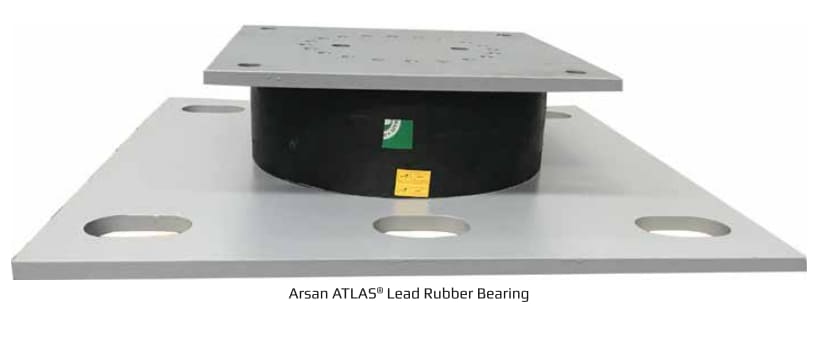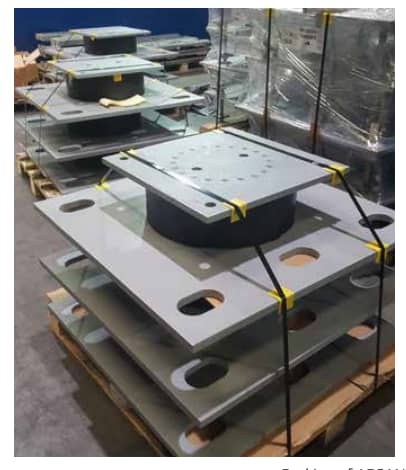Atlas Lead Rubber Bearing is made of rubber with a lead core in order to provide additional stiffness, uniform deformation and additional damping for an adequate level of energy dissipation. The period of vibration of the building is lengthened sufficiently to reduce the force response. Prevents the occurrence of resonance, which could lead to severe damage or even collapse of a structure. Provides an adequate level of energy dissipation in order to control the displacements that could otherwise damage other structural members. Recentring capabilities after the occurrence of a severe earthquake so that no residual displacements can disrupt the serviceability of the structure.
The amount of dissipated energy by lead rubber bearing is equal to the area under the graph of the hysteretic loop. For each loop, kinetic energy is dissipated and turns to heat energy. Rubber behaves linear up to strain rate between %100 and %250. Thus, the internal rubber layers provide great flexibility in a lateral direction with low shear modulus.
Seismic isolation principle is to isolate the superstructure from substructure with a bearing that vertically stiff but horizontally flexible. This flexibility lengthens the fundamental period of the isolated building and reduces the seismic forces in the superstructure.
Specifications
| Manufacturer: | Arsan Kaucuk |
| Country of origin: | Turkey |
| Features | Flexibility, Energy Dissipation, Rigidity for Non-Seismic Loads, Recentering Capability |
| Standard | EN 15129, EN 1337, EN 10025, EN 12944 |










